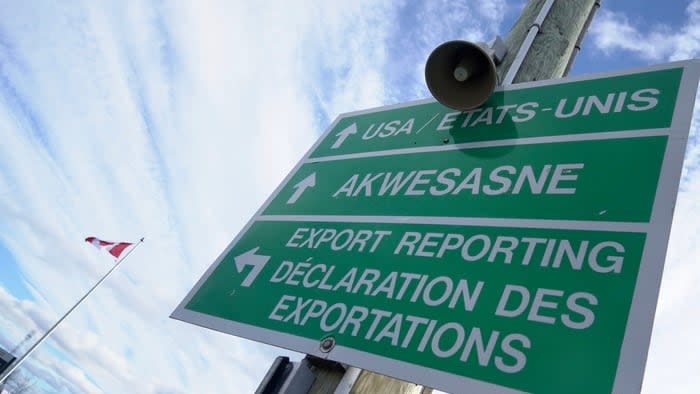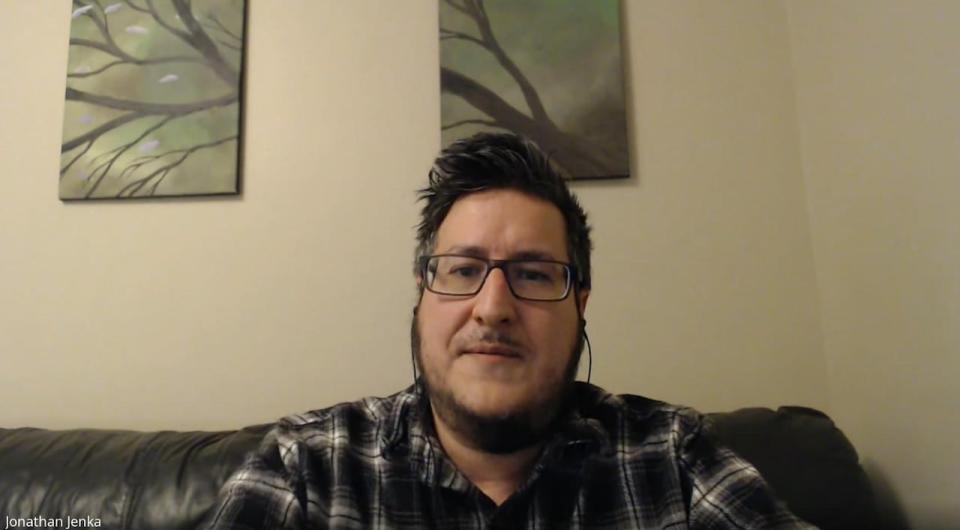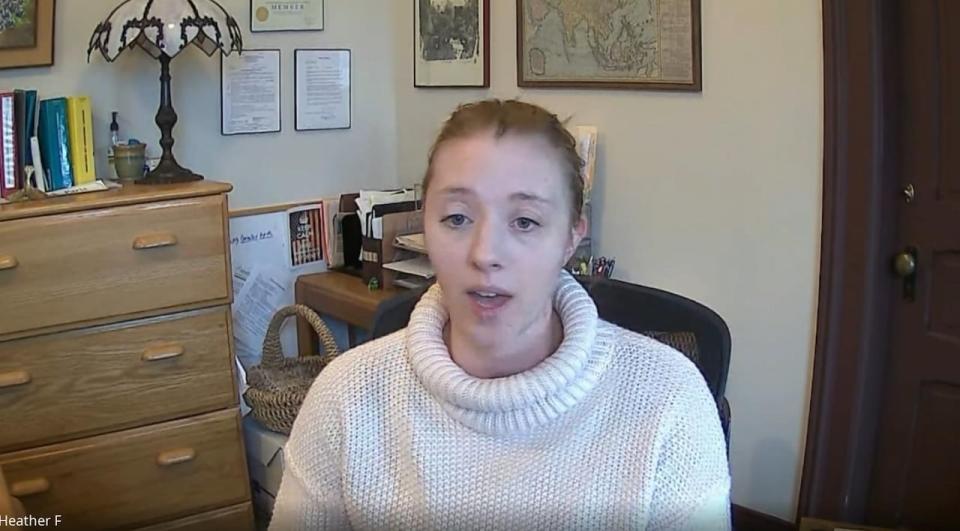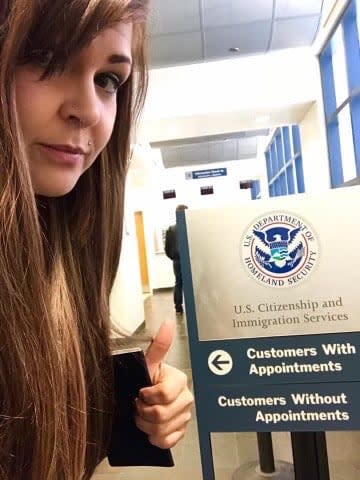Want to work in the U.S. through the Jay Treaty? Some say process is confusing, frustrating

While obtaining permanent residency in the United States through Jay Treaty rights sounds easy, the actual experience and amount of time it takes can vary.
The Jay Treaty was signed in 1794 between Great Britain and the United States. Under the treaty, "American Indians" who were born in Canada can freely enter the United States for travel, studies, employment, retirement and immigration.
But to prove eligibility under the treaty, the U.S. government requires a set of documents which some say are unclear, and some are even having trouble getting.
Documents that help prove eligibility under the Jay Treaty:
Long-form birth certificates for oneself and every parent generation tracing their ancestry
Jonathan Jenka has waited two years to get a letter from his band, Mikisew Cree First Nation, whose territory straddles the Alberta-N.W.T. border, so he can join his fiancé in the United States.
He said his fiancé has had to take on most of the financial responsibilities; his credit cards and lines of credit have helped, but those are drained.
"I'm pretty much on the brink of claiming bankruptcy, just over one letter that my band won't do," Jenka said.
"That's what's been destroying me. It's so simple for them to do and to help their members.''
Jenka said the U.S. government will not accept his supporting documents without the letter of blood quantum from his band — even with a letter of ancestry from Indigenous Services Canada.

Jonathan Jenka says he was able to obtain a letter of ancestry from Indigenous Services Canada, but was told by United States Citizenship and Immigration Services that it wasn't enough to get a green card. (CBC)
CBC News contacted the Mikisew Cree First Nation chief and the membership councillor but neither provided a statement before time of publishing. The United States Citizenship and Immigration Services also did not provide a statement before time of publishing.
Indigenous Services Canada said in a statement that registration under the Indian Act does not confirm to the U.S. government someone is Indigenous. It said it will provide a letter of ancestry to an individual but it is not promised that the U.S. government will accept the letter as full proof.
It directs individuals to reach out to their band for a letter to confirm membership.
Lawyer explains typical process
Heather Fathali, an immigration lawyer in Bellingham, Wash., said because she's near the border her firm receives a few inquiries a month about the Jay Treaty.
She said a blood quantum confirmation letter, when paired with Indian status registration and information about family history, can be used successfully to prove eligibility for Jay Treaty rights.
Fathali said people should check with their bands to learn if they provide blood quantum letters as many have different policies on this documentation and some consider it inappropriate to write one.
"Depending on what the band's policies are, they might be able to dig further," she said.

Lawyer Heather Fathali says one of the documents that helps prove Jay Treaty eligibility is a blood quantum letter, which is usually obtained from one's registered First Nation. (CBC)
When an individual wants to use their Jay Treaty rights, Fathali said they need to arrange an appointment at a United States Customs and Immigration Services field office to discuss their case with an officer.
They would need to bring all relevant documentation and would fill out an I-485 form, which is used for green card applications. Fathali said the I-485 form is required for information gathering purposes but the applicant shouldn't need to sign the document.
The next step is a biometrics appointment where digital fingerprints are done and photos taken. The entire process should be done in an expedited manner by the U.S. government, she said.
Once the application is successful, Fathali said the applicant's green card will be mailed to a U.S. address.
A successful experience
Kale Bonham from Swan Lake First Nation in Manitoba is living in Los Angeles, using her Jay Treaty rights.
She said it took her around four to six weeks to get her permanent residency status. Bonham said the process was confusing because there wasn't any official guidance about what to do.
"It's not like someone tells you; I had to figure that out on my own," she said.

Kale Bonham, from Swan Lake First Nation in Manitoba, at a United States Citizenship and Immigration Services office. She is living in Los Angeles as a full-time tattoo artist. (Submitted by Kale Bonham)
She said she gathered her long-form birth certificate, her passport and a letter of ancestry from ISC. Like Jenka, she did not receive a letter of blood quantum from her band.
She said she went to a United States Citizen and Immigration Services office and provided the paperwork, but between three employees on-site, none had seen someone apply for permanent residence through the Jay Treaty.
She went to another office and was able to get a social security number, which allowed her to live and work in the United States permanently.
Not recognized by Canada
Joel Abram, grand chief of the Association of Iroquois and Allied Indians, said Jay Treaty rights are used frequently by people in communities on the border.
An issue the communities face is that Canada doesn't recognize the Jay Treaty; it considers it cancelled by the War of 1812 and it was never codified in Canadian legislation. So while Indigenous people in Canada can go to school, work and visit family freely in the U.S., those in the U.S. require a passport to cross the border.
Abram said Indigenous people in North America have a pre-existing inherent right of travelling freely, due to not recognizing borders.
"We view this as one of the more colonial viewpoints of the Canadian government and really wanting to prevent First Nations from really exercising their long held inherent sovereignty rights with regards to travel," Abram said.
In a statement, Indigenous Services Canada said the Jay Treaty is not in force in Canada but it is working with the Jay Treaty Border Alliance, an advocacy group comprising Indigenous communities on both sides of the border, to develop solutions.
"The Government of Canada has committed to implement the United Nations Declaration on the Rights of Indigenous Peoples Act," the statement said, including the pursuit of "legislative amendments in order to address complex border-crossing and migration challenges faced by Indigenous Peoples divided by Canada's international borders."
Meanwhile, Jenka is currently living in Sherwood Park, Alta., and his fiance lives in Oregon. He said he hopes to marry her to continue their life together.
"It would take [the band] probably a couple of minutes to get my life back on track and they're just not doing it," Jenka said.
"It's frustrating."

